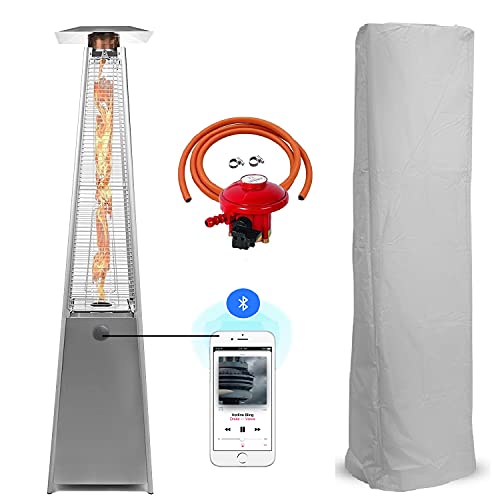Cheap Patio Gas Heaters
Patio heaters come in a wide range of styles and sizes. Some are electric hardwired and require professional installation, while others use propane or natural gas to heat your space.
Mobile gas cylinders come in a variety of sizes, from 5kg patio bottles to 13kg propane cylinders. They are compatible with traditional BBQs as well as mobile heaters and Ooni Pizza Ovens.
Cost
The addition of a gas heater for your patio to your business or home can increase the value of your property and the number of people using your outdoor space. It is a cheaper alternative to other outdoor heaters, like wood-burning fire pits or propane heaters. The patio gas heater is also suitable for indoor use to create a cozy environment in the winter.
The cost of patio gas is dependent on the type and size of your appliance. For instance, a 5kg propane bottle for a patio will cost around PS28. This includes a 27mm clip on regulator ** that works with most barbecues and patio heaters. However, certain patio heaters require a separate regulator.
A propane gas cylinder is the ideal choice for pizza ovens and tabletop heaters. It is not odorless and cost-effective. It is also easy to store and move. Most propane-powered appliances are sturdy and secure. They last for an extended period of time and are a great option for homeowners and businesses that require savings on heating costs.
Propane is a non-toxic green fuel that can be used to heat, cook and for a variety of other uses. It is also less expensive than electricity and has lower maintenance costs. It is also less affected by oil price spikes.

Efficiency
Gas patio heaters are an efficient way to heat outdoor spaces. They can generate massive heat output and can quickly heat an area up to 215ft2. They do not require any installation and can be moved easily. gas patio heater can also be switched on or off using the remote control or programed timers. Some models have an automatic shutoff feature to prevent accidental fires.
When it comes down to choosing gas types there are two choices available: propane and butane. Both are LPG however, they differ in their boiling point and boiling speed, with butane being more cold than propane. Butane is usually stored in green cylinders, under the label "patio gas" whilst propane is stored in red cylinders. Both kinds of gas are compatible with the majority of standard BBQs and patio heaters and are available at most gardening and home stores.
Gas bottles for patios are designed to fit in your heater or BBQ and come in a variety of sizes that range from 5kg to 13kg. Some even have an indicator to let you know when the gas is low. They are compatible with regular BBQ regulators. You can save money by using butane instead propane. Many appliances can be converted to run using either fuel.
Butane is extremely efficient when used in hot conditions. It is ideal for BBQs and camping gas stoves, and portable heaters. However, it is less efficient in winter as it can't flow at extremely low temperatures. It is a very low-toxicity fuel with a low carbon footprint and is ideal for people who are concerned about their environmental impact.
It is essential to be aware of and follow the guidelines given by the manufacturer when using the gas patio heating device. It is crucial to follow the manufacturer's instructions to avoid poisoning with carbon monoxide. Additionally the appliance should not be exposed to naked flames and high temperatures. Patio heaters should be put in areas that have adequate ventilation and not used indoors.
Safety
When you are using propane gas for your patio or hearth, it is essential to be aware of some safety concerns. These safety precautions include proper handling and storage and the use of Personal Protective Equipment (PPE), and establishing emergency procedures. For instance, cylinders need to be stored in a designated location away from ignition sources and should not be moved. Gas should be shut off and personnel evacuated if there is evidence of leakage. All cylinders should be clearly marked with the contents and supplier's information. They should also have a valve that can be opened by hand using no force.
